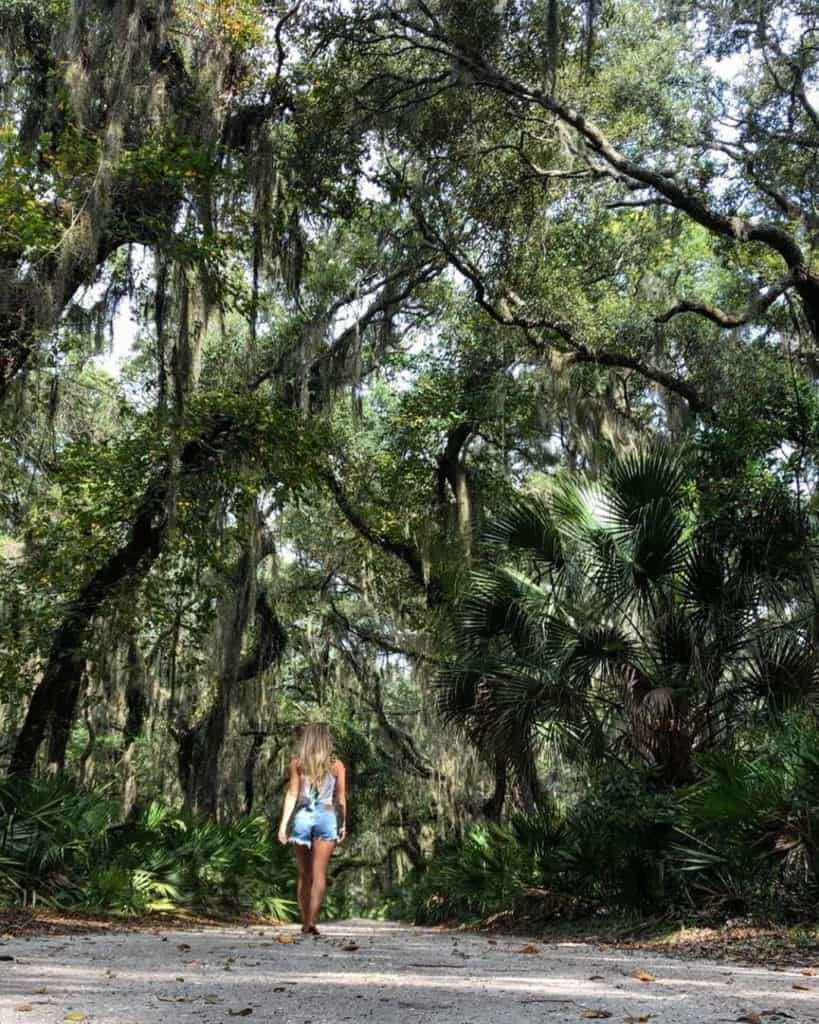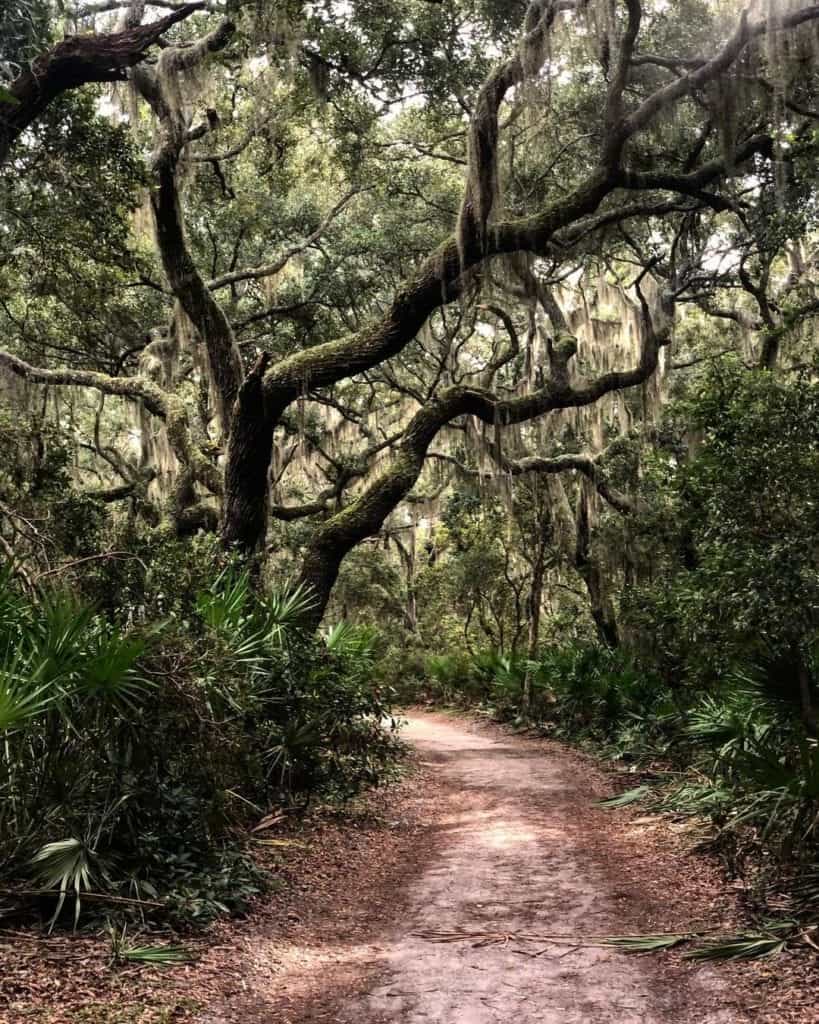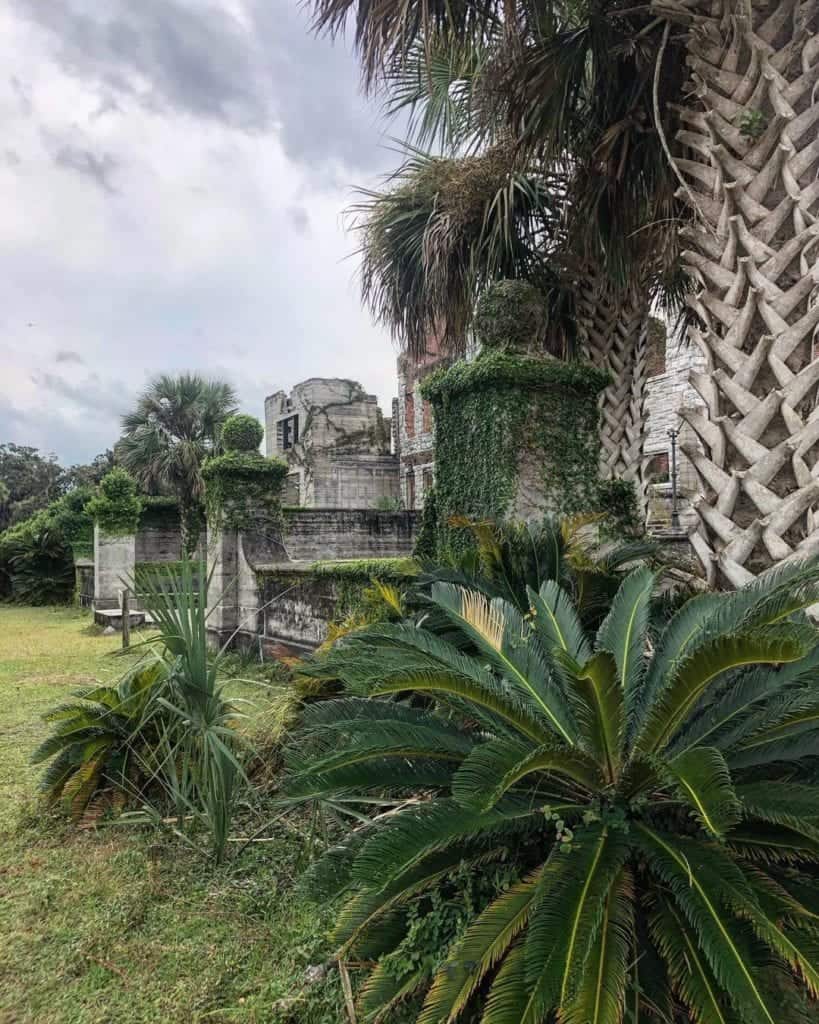With 18 miles of secluded, undeveloped beach providing wholly unobstructed vistas, an extraordinary maritime forest of moss-draped live oaks and pines (one of the largest remaining in the U.S.) and wild horses roaming along the shore, a trip to this paradise will give you a taste of ‘endless summer’ among wildlife, trees and beaches while folks in many other places are hunkering down indoors.
When the temperature outside starts to dip, there’s no need to give in to shivers and shakes or the extra layers and indoor spaces required to ward them off. Just head to a gorgeous, nature-filled destination where fall is the most comfortable, temperate season of the year. One place I can heartily recommend is Cumberland Island off the Atlantic coast of Georgia—the state’s largest and southernmost barrier island, acquired by the National Park Service in 1972 to form the Cumberland Island National Seashore and protect its 9,800 acres of stunning wilderness.

Secluded and mostly undeveloped, the island wasn’t on most people’s radar until John F. Kennedy, Jr. and Carolyn Bessette selected it for their wedding destination in 1996. Even now, it’s not all that well-known, though it certainly should be given its exquisite natural features. I first learned about Cumberland Island a couple of decades before the Kennedy marriage through a book about remote places. A short blurb described the island as a cross between Bali Ha’i (in the sense of the exotic island paradise in the musical play South Pacific) and the Garden of Eden. With that sort of rave review, how could I possibly resist going?
While making arrangements for the journey proved a bit challenging (communications with the island relied on ship-to-shore radio), the effort was a small price to pay for an experience that more than lived up to the book’s review. These days, it’s a whole lot easier to go—it just takes some advance planning.
Come out for a day, camp overnight or stay at the Greyfield Inn, built by the Carnegies in 1890—its décor reflects its rich history.
Cumberland Island’s Magnificent Nature

One of the most compelling aspects of the island is the diversity of its three eco-systems and the variety of activities that visitors can engage in to explore them. Fortunately, many miles of trails provide access to the protected wilderness areas that encompass over half of the island. An intriguing fact to bear in mind as you explore: indigenous peoples, enslaved African Americans, Spanish missionaries and affluent industrial magnates populated this island – with the first inhabitants living on the island about 4,000 years ago.
Swim in the Ocean and Walk and Sunbathe on the Beaches
Get away from it all by walking along the island’s broad stretches of vegetation-covered dunes, sunbathing on sandy shores that seem to go on forever and listening to the tumbling surf. Many visitors relish swimming here (there are no lifeguards though). Elevated boardwalks provide sand-less approaches to the shore and scenic views while protecting the delicate dunes.
Walk and Bike Through the Oak and Pine Maritime Forests
Hike the well-marked trails through the oak and pine forests (there are over 50 miles of trails here). Tendrils of moss that hang from the branches evoke the beards of wizards and lend an air of mystery to the dense canopy. Wildlife includes deer, turkey, bobcats, snakes, tortoises and migratory birds.
Bikes can only be ridden on the island’s sandy roads, not the trails or beach, but these roads cut through some great areas. (Adult-sized bikes can be rented at–and must be returned to–the Sea Camp Dock where the Cumberland Island Ferry pulls in; they manage the rentals. Day rentals cost $16; overnight rentals are $20.)
Kayak and Gather Shrimps and Crabs in the Salt Marshes
Many visitors enjoy kayaking the serene salt marshes on the western side of the island where tidal creeks wind through seas of grass protected from the waves that impact the eastern side.
Kayaking is also a popular way to get to the island. To avoid the tides, which are very strong around Cumberland Island, it’s best to depart from Crooked River State Park. However, highly skilled paddlers who don’t mind contending with the powerful tides can venture out from St. Marys, Georgia or Amelia Island, Florida.
Anglers can tap into the bounty of shrimps and crabs in the tidal marshes.
Camp Out
There are five campsites on the island: two at Sea Camp and Stafford Beach, and three wilderness campsites at Hickory Hill, Yankee Paradise and Brick Hill Bluff.
Camping requires a reservation and permit; make a camping reservation here.
Other Things to See & Do on Cumberland Island

After you disembark from the ferry, stop by the Sea Camp Ranger Station—the rustic park ranger station by the dock to get information and helpful advice for your stay. Given the island’s rich history, there are several things you’ll likely want to see and experience in addition to the amazing nature. For example:
1) Wander around the picturesque Dungeness Ruins, an 1884 mansion built as a winter home for Thomas Carnegie—younger brother and business partner of Andrew Carnegie, his wife Lucy and their 9 children. Over time, it expanded to 35,000 sq. ft. and, in 1959, caught fire, leaving only brick and stone walls. You’re likely to see some of the island’s fabulous feral horses here—their lineage extends to the King of Arabia’s royal stables.
2) Get a sense of Edwardian High Society at the turn of the 20th century by walking or biking to the 22,000-sq.-ft. Georgian Revival Plum Orchard Mansion, built by Lucy Carnegie in 1898 for her son, George and his wife, Margaret Thaw.
3) Visit the Ice House Museum, which was built around 1900 and used to store ice shipped to the Carnegie Estate.
4) See the First African Baptist Church—a small Baptist church originally established in 1893 by African American residents of the island and the site of the John F. Kennedy, Jr. nuptials.
5) Stay at the romantic Greyfield Inn, built in 1900 by Thomas and Lucy Carnegie for their daughter, Margaret Ricketson, if you’re seeking a more upscale lodging alternative to camping. The Carnegie family still oversees the Inn, which offers guided jeep or boat tours with expert naturalists and bike rentals. For guests, the Inn runs its own roundtrip private ferry service—the Lucy R. Ferguson from Fernandina Beach, Florida.
Note: The 4.3-mile “Southend Loop” is the most popular walking route for day visitors—it provides exposure to the island’s key ecosystems and top man-made sites.
How to Get to Cumberland Island
Cumberland Island is located seven miles east of St. Marys, Georgia and can only be accessed by boat. To reach the island, day visitors and campers can take the Cumberland Island Ferry, which departs from the Cumberland Island Visitors Center in St. Marys. Offering lovely views, the approximately 45-minute trip across the Cumberland Sound hints at the great beauty that lies ahead on the island.
Check out the ferry schedule here and book a ferry here. Or call the Reservation Office from 9 a.m. to 4 p.m. at 877-860-6787 to reserve a spot for yourself and your bike, if you bring one.
Plan on arriving at the Visitors Center and checking in 60 minutes before your scheduled ferry departure time. During your check-in, you’ll also check your bike in and pay the park entry fee. If you plan on camping on the island, be sure to call 912-882-4336 and make a camping reservation before booking your ferry; you’ll check in for your camping during the ferry check-in. Make sure to print your camping permit and bring it with you. Grab a map at the Visitor Center, too.
What to Bring
While the ferry sells ice, firewood, potato chips and drinks once it is docked at Sea Camp on Cumberland Island, there’s absolutely nothing for visitors to purchase on the island. So, it’s vital to plan ahead and come prepared with everything you’ll need during your time there—essentials include water, a water bottle, food, bug spray, sunscreen, a trash bag, face covering, hand sanitizer, an extra layer of clothing and camping gear, if you plan on camping.
Once the ferry docks in Cumberland Island, you can rent a cart and bike next to the Sea Camp Ranger Station; they’re available on a first come, first served basis.
